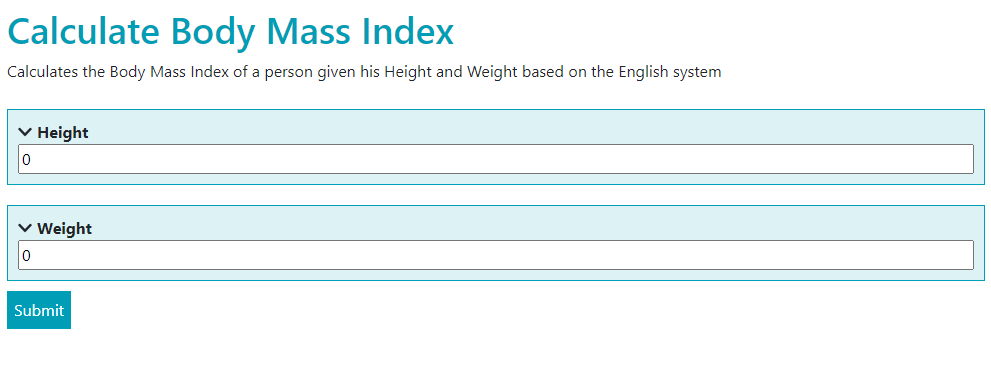Form Endpoint
Content-Type: text/html HTTP-Methods: GET
This endpoint is intended to be used through a standard web browser to display an HTML form to execute the service. The form presents all the required inputs for the service and offer a submit button to execute it. The form also supports entering complex types such as date/time and tables.

Additional user interaction modes are also available from the drop down:
File mode
Allows users to submit the inputs of a service using an XML, JSON, Excel or PDF file. The displayed widget for the service offers the ability to download templates for most of the formats.
Developer mode
Allows developers to have an advanced view for the Form interface. It includes multiple side panels to inspect the request/responses received, customize the look of the form using Cascading Style Sheets (CSS) and develop their own custom data type renderers using JavaScript.
Redirect web flow after submission
When the form endpoint is integrated with 3rd party system, it is possible to redirect the web flow back to the referring system after a submission.
This is achieved by adding a redirect query parameter to the form endpoint. The value of this parameter needs to be an URL where the web flow should continue after submission.
| The host name of the redirect URL must be the same as the one sending the request. In other words, the referrer host must be the same as the redirect host. |
POST redirect
By default, the redirection will be done through a POST using the form multipart/form-data encoding.
The form will have a single field called result and its value contains a JSON string that follows the same output schema as making the equivalent REST POST on the restURL.
GET redirect
Adding an extra query parameter redirectMethod=GET, the redirection will be done through a GET using query parameters to carry back information:
-
when successfully completed -
instancerepresents instance id,namerepresents instance name,staterepresents instance current state,tagsoptional instance tags -
when failed -
stateis set toerrorandstatusrepresents the error information/code